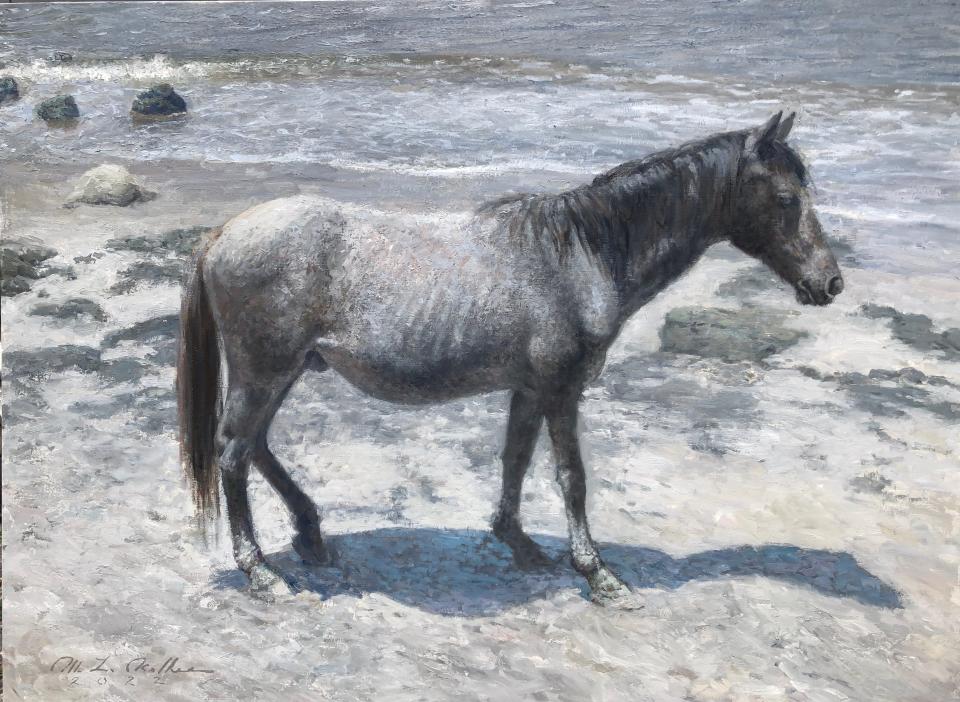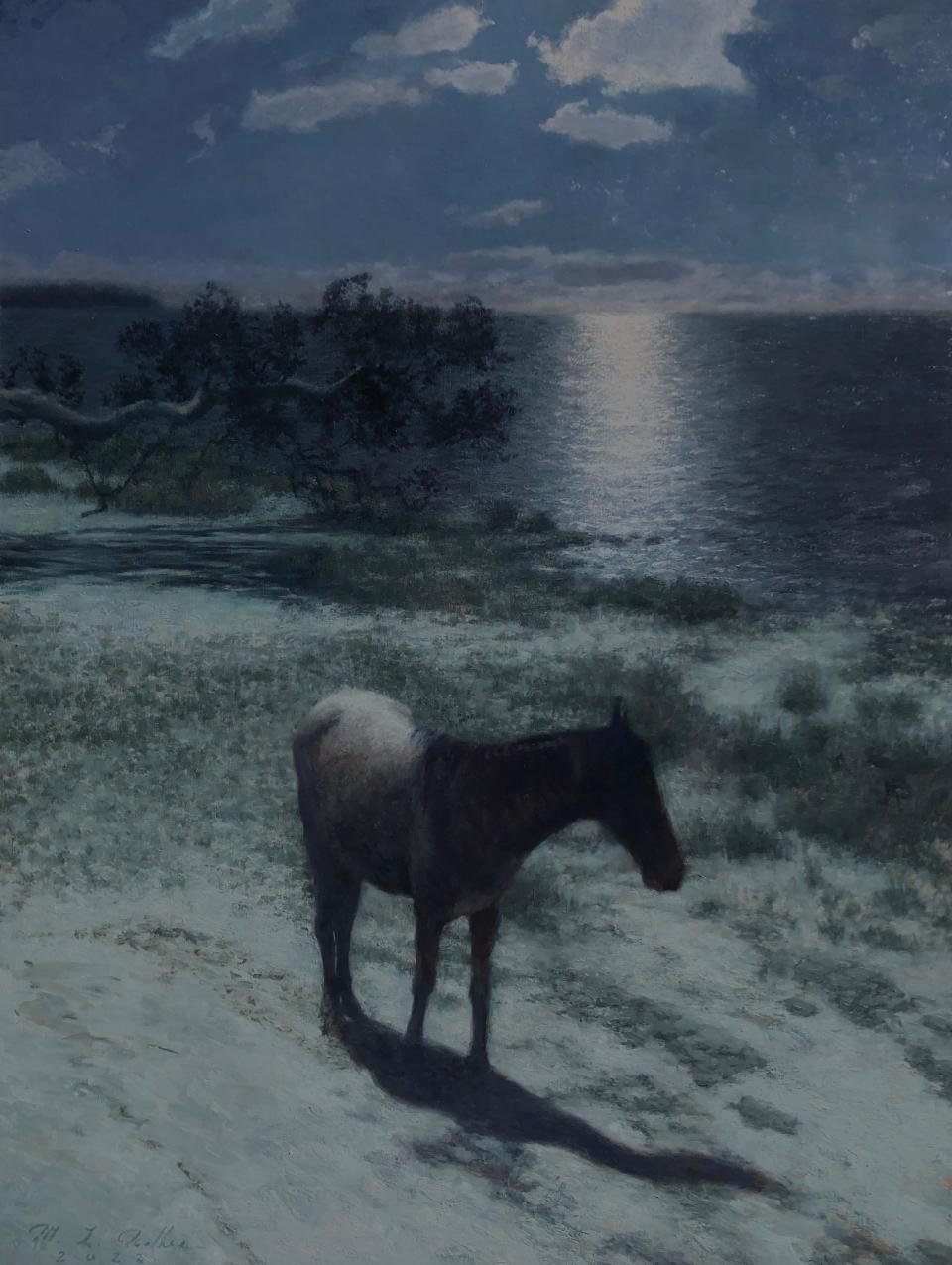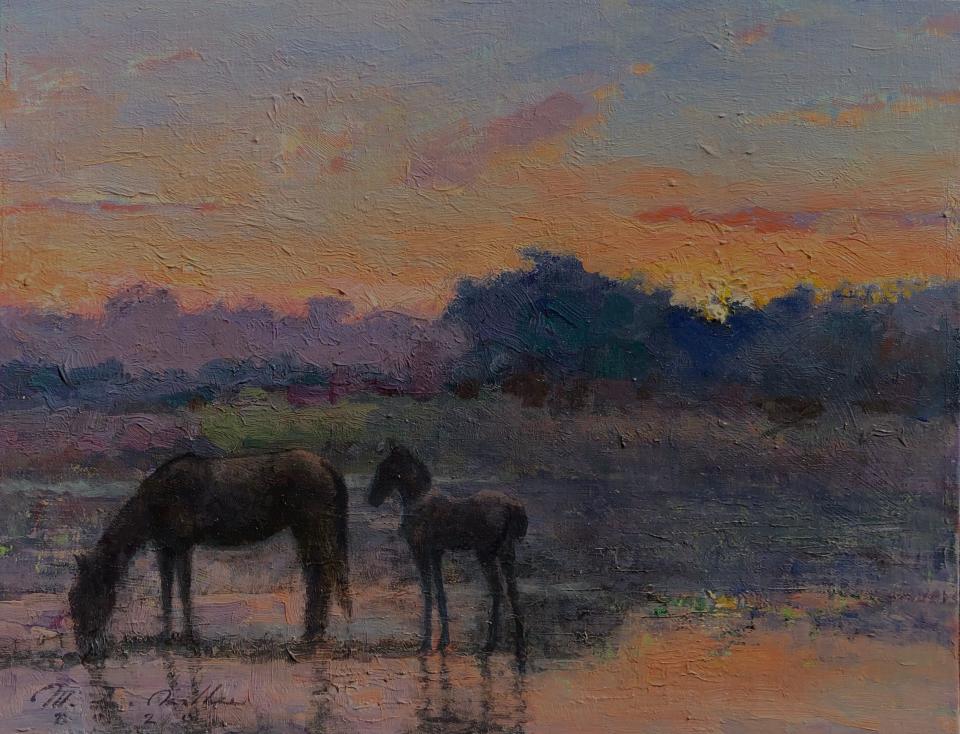The horses of Cumberland Island come alive on the canvas at the Grand Bohemian Gallery
One late fall morning in 1972, Mitch Kolbe sat in geometry class. His teacher lectured on the formula for calculating slope as Kolbe’s gaze wandered out the window. It rested on the rise of a nearby chimney where he soon found himself absorbed in the color and texture of brick steadily rising one atop another. When the teacher called his attention back to class, he demanded what was so important beyond the window.
Earnestly, Kolbe replied, “I was thinking about how I would paint the slope of the chimney out there.”
Soon after, Kolbe’s geometry teacher mentored him in applying for the national merit art scholarship. After winning the prestigious award, Kolbe left rural North Carolina for art school in New York City where he grew and thrived but remained a country boy at heart.
Come into my world: How Telfair curators enter Savannah artist studios for insight, knowledge
'Art is a magical endeavor': Carlos Estevez comes back to explore the hidden lines of Savannah
Hog wild: Even with development looming, feral swine likely here to stay in Georgetown
He enjoyed creating landscapes and painting en plein air, and in the intervening years after art school, Kolbe’s plein air paintings emerged as his signature style.

This Friday, Savannah celebrates some of Kolbe’s nature-inspired art with “Wild Ponies of Cumberland Island,” an exhibit that chronicles a day-in-the-life of some of Georgia’s most special barrier island horses. The show opens Friday and runs through Dec. 23 at Plant Riverside’s Grand Bohemian Gallery.
The idea for the paintings came about in 2006 when Kolbe went on a 10-day boat trip with longtime artist friend, Tom Sadler. Sadler had purchased a 26-foot sailboat and wanted to take it from Isle of Hope near Savannah to Titusville, Fla. The friends decided to do the adventure together and paint the barrier islands along the way. They stayed only a day at each island, painting and taking photos as reference for future works.
The Art Scene: Over 4 years, Grand Bohemian Gallery's Savannah Series has created canvas for local art
When they arrived at Cumberland Island, they were greeted with a pleasant surprise.
“After we gathered our art supplies and ventured ashore, right away a mare and stallion ambled by us and then just stood there as if posing for us to paint them. The painting in this show entitled 'Beachcomber' is the result of that encounter, painted on location while the mare just stared off into the distance.”

The origin of Cumberland Island’s horses is a bit unclear.
According to the National Park Service, “a few horses were probably brought to Cumberland as livestock when Spanish missions were established in the late 1500s although evidence is scarce.” 1742, however, does mark the earliest documented occurrence of horses — as many as 60 animals were noted during a battle between the Spanish and English for control of the island.
'They're our waters': Savannah's Storm Drain Art Project involves community in our waterways
By the early 1800s, at least 200 horses were there as by then multiple plantations were also on the island. Flash-forward to the 1880s and the beginning of the Carnegie family compound then into the mid-20th century, a couple hundred horses were regularly rotated on and off the island. But after the Carnegies left, fewer and fewer people lived on Cumberland, so that what horses remained became free ranging.
By 1972 when the island was designated a National Seashore, all horses were feral.

Currently, as many as 200 of them live unmanaged on Cumberland Island. Whether or not these animals are more closely related to older Spanish horse bloodlines, horses as an introduced species have been on Cumberland for at least 270 years.
“I hope these paintings spark conversations about the conservation of these beautiful animals,” mused Kolbe.
“Cumberland Island has the only feral herd on the Atlantic coast that is not managed. There’s no veterinary care or population control, and they exist as truly wild free animals surviving in nature. For this exhibit, I’m a plein air journalist of sorts reporting on the ponies and hoping to get people thinking and talking about how these creatures live.”
What: “Wild Ponies of Cumberland Island”
Where: Grand Bohemian Gallery, Plant Riverside, 400 W. River St.
When: Artist Reception, Friday, November 25, 5:00 p.m. to 8:00 p.m.; Exhibit run through Dec. 23.
This article originally appeared on Savannah Morning News: Savannah GA art galleries: Wild Ponies of Cumberland Island

